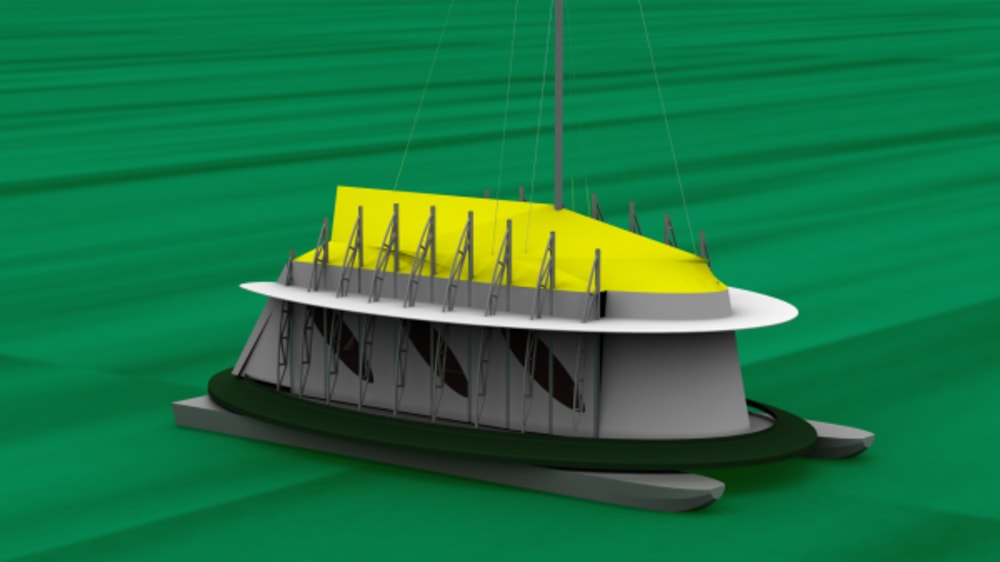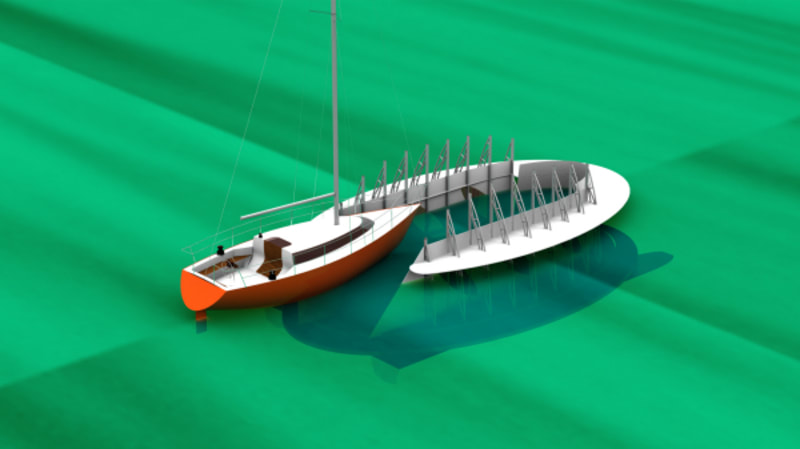Recreational vessels (RVs) are often serviced in boat yards. It is very common to see boat yards with a very limited infrastructure to support an efficient workflow. In fact, some of the boat yards have challenging conditions, sometimes unsafe for workers and customers. These challenging conditions reduce the quality of the service and ultimately increase the cost of the operation.
Over 90% of inland waterways (IW) have no access to boat yards or service facilities within a distance of 10 miles. High property values in the surroundings of IW limit the options for boat owners when they have to service their boats. Vessels over 28 ft are costly to remove from the water and transport for servicing.
What is needed, therefore, is a portable dry dock (PDD) that is optimized for servicing recreational vessels. This PDD is transported to the site and provides a very efficient and cost-effective working environment for typical maintenance operations on RVs, including cleaning, repairing, sanding and painting.
This novel approach to boat maintenance provides unique advantages over options available today:
- The PDD can travel to the boat improving convenience for the owner.
- The PDD provides a robot assisted, very efficient work environment that may not be economically profitable for a stationary boatyard site. The fact that the PDD can travel to different places improves the economies of scale, making it profitable to use high-technology equipment and provide lower cost to the user.
- The PDD creates an enclosed facility that provides protection from the weather and minimized the environmental impact of the cleaning and painting activities.
- Having an enclosed operation, facilitates reliable schedules, improving the quality and consistency of work.
- The PDD prevents water contamination by keeping all the processes isolated from the waterway.
- Water used for the washing and cleaning is filtered and re-used continuously.
- It supports EPA’s Clean Water Act and Clean Boating Act reducing pollution originated in the cleaning of recreational vessels.
There are approximately 13 million state-registered recreational vessels in the USA. This invention is targeted to boat sizes between 28 and 38 ft, this reduces the potential market to probably a few hundred thousand RVs to service.
The PDD consists of a multi-hull vessel with a superstructure that has a sealed working area, where temperature and humidity can be controlled. The RV is positioned in this working area for the service operation. Waste material coming from the operation is processed so contaminants are properly trapped and stored for propped disposal.
To load the RV on the PDD, the PDD is submerged by injecting water ballast into the buoyant members. The RV is secured on the PDD deck with the use of a lifting frame and hull supports.
With the aid of a robotic arm, multiple operations are performed on the hull, including cleaning, sanding, repairing and painting.
This unique combination of features integrated in the PDD system maximizes work efficiency, improves the quality, and reduces the cost, the time, and the environmental impact of the service operation.
Like this entry?
-
About the Entrant
- Name:Marcelo Perez
- Type of entry:individual
- Software used for this entry:Rhinoceros, Brazil
- Patent status:patented








